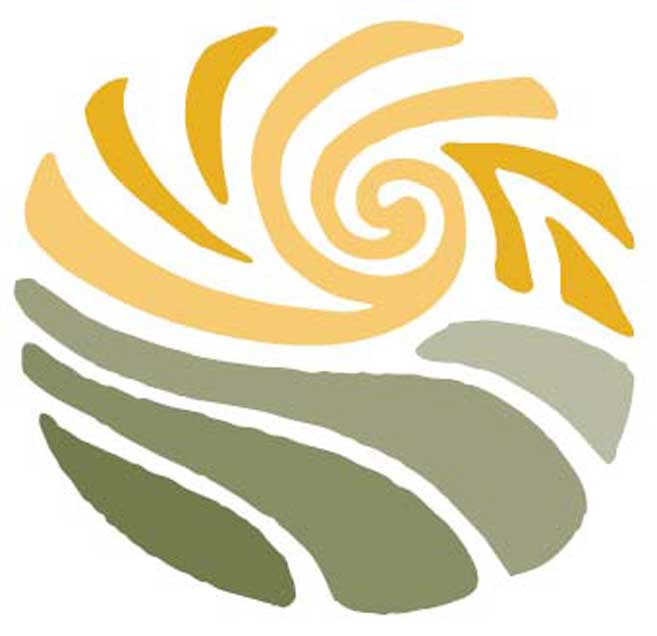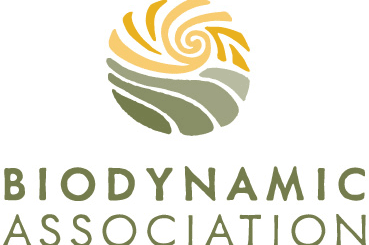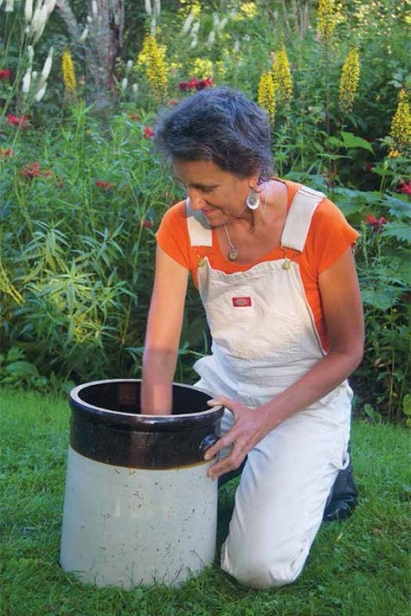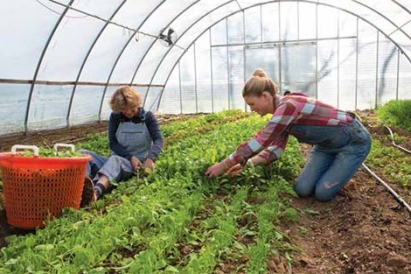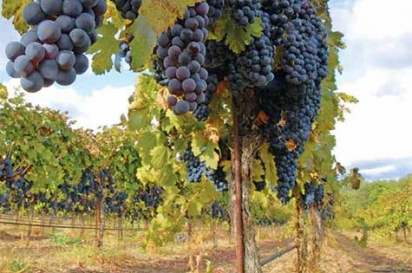Biodynamic: Beyond Organic
Biodynamics cultivates balance in farming
Biodynamics is a holistic approach to farming and gardening that takes organic principles to a whole new — and ancient — level. As in organic agriculture, biodynamic farmers do not use synthetic fertilizers, pesticides or herbicides. But biodynamics is not only about what farmers cannot do. Biodynamics is an ecological, ethical and spiritual approach to agriculture which creates fertility and health from within the farm, and produces food with extraordinary flavor, nutrition and quality.
Biodynamics was first developed in central Europe in the early 1920s by a group of farmers led by Rudolf Steiner, an Austrian philosopher and social reformer. It is now practiced on more than 350,000 acres of farmland in 47 countries. Biodynamics has an independent certification system managed worldwide by Demeter International and in the United States by Demeter USA. Since the 1930s, biodynamic practitioners have played a key role in the renewal of agriculture in North America — from helping to pioneer the early organic movement, to inspiring the work of Silent Spring author Rachel Carson, to starting the first community-supported agriculture (CSA) programs in the U.S. in the 1980s. Founded in 1938, the Biodynamic Association supports this growing and vital movement through conferences, a journal, farmer training and research.
What differentiates biodynamics from other approaches to agriculture?
Biodynamic farmers proactively manage their farms — soils, crops, animals, woodlands, riparian areas — as an interconnected whole. They strive for a balance and diversity of crops and livestock so that the farm may become as self-sustaining as possible, relying on compost, manure and soil-building crops to meet the farm’s fertility needs.
Nine biodynamic preparations made from fermented manure, herbs and minerals are used as field sprays and in the making of compost to stimulate specific health-giving processes within the farm.
Biodynamic farmers build an awareness of the daily and yearly rhythms and influences of the sun, moon and planets on the Earth and strive to work in cooperation with these influences. They also work to develop their capacity to sense and observe the subtle forces at work in nature and to use their own insights to enhance the vitality of their farms. For this reason, biodynamic methods are not set in stone, but rather are in a continuous state of evolution and individualization.
Three wonderful examples of the diversity and vitality that can be cultivated through biodynamics are Avena Botanicals, Frey Vineyards and Foxhollow Farm. Avena Botanicals raises certified Biodynamic® medicinal herbs in Maine, using biodynamic methods to enhance the healing properties of these powerful plants. Frey Vineyards is a three-generation family Biodynamic vineyard and winery in California, using biodynamics to enhance the terroir — the unique flavor of their land — in their wines. And Foxhollow Farm raises both grass-fed beef and vegetables, providing nutritious and flavorful food to families and restaurants in Kentucky.
On the following pages we invite you to step into a picture of each of these farms and experience the vibrant health and individuality that can be created through biodynamics.
If you’re interested in finding out more about biodynamics, take advantage of the very special opportunity to attend the 2014 North American Biodynamic Conference, “Farming for Health,” being held in Louisville Nov. 13–16; Biodynamics.com/conference.
Avena Botanicals
Tucked away in a small town in the mid-coast region of Maine is the biodynamic medicinal herb farm and herbal apothecary Avena Botanicals. I was inspired to create Avena Botanicals in 1985 as there was (and still is) a great need for healing gardens and high-quality, handcrafted herbal remedies in both rural and urban communities in the United States.
Here at Avena Botanicals we have been working with the biodynamic preparations since 1997 and in 2011 became the first Demeter-certified biodynamic farm in Maine.
Four gardeners and myself tend three acres of medicinal plants and flowers for pollinators. Each growing season we collect, by hand, over 1,800 pounds of medicinal herbs, which are prepared immediately into fresh plant extracts or dried for Avena Botanicals herbal teas, salves and crèmes. Our three-acre gardens are open Monday–Friday from noon to 5pm. We welcome visitors to enjoy the beauty and peacefulness of our gardens or to participate in various herb walks, lectures and workshops sponsored by our educational center, The Herbal Classroom.
I was introduced to biodynamics in 1986 through the Stella Natura Biodynamic Planting Calendar (published yearly in Kimberton, PA). Biodynamic calendars focus on lunar rhythms and use standard astronomical data when outlining the movements of the sun, moon and inner planets. We use the calendar at Avena Botanicals for guiding the activities of sowing and saving seeds, transplanting seedlings in our greenhouse and garden, digging medicinal roots in spring and fall, working with our beehives and choosing the dates for applying the biodynamic preparations in our garden and compost piles.
I appreciate that the biodynamic system of gardening and farming relates the ecology of the Earth to the larger cosmos, places significant attention on soil health, consciously works with seasonal and lunar rhythms and recognizes and nurtures the spiritual presences and unseen life forces active in the garden.
Starting in the spring we apply the soil preparation known as BD 500 (in the early evening) to our garden soil to enhance microorganism growth, increase earthworm activity, and improve root growth in plants. We apply another preparation known as BD 501 (at dawn) several times throughout the summer months. This preparation works directly through the plant, stimulating and regulating leaf growth and supporting the flowering and fruiting processes.
There are six commonly used medicinal plants — yarrow, chamomile, nettle, oak bark, dandelion and valerian — that are prepared in specific ways and added to a newly built compost pile to enhance plant growth and nutrition. (The preparations are available for purchase from different biodynamic prep makers.) We use the herb horsetail, called BD 508, if needed to prevent fungal diseases such as rust, mildew and brown fruit rot. And we make and use a diluted nettle tea as a foliar and soil spray to enhance the vitality and health of our medicinal herbs when they are young or stressed. Each biodynamic practitioner’s understanding and uses of the biodynamic practices and preparations are informed by their personal connection to the landscape and cultures they come from and currently live with, their teachers and mentors and life experiences. Integrating biodynamics into my practice as an herbalist and gardener has helped me develop inner and outer skills to grow and prepare herbal medicine that contain the life forces needed by humans to be whole and connected to the wisdom of the Earth and Cosmos.
Deb Soule is an herbalist, biodynamic gardener, teacher and author of The Woman’s Handbook of Healing Herbs and How To Move Like a Gardener: Planting and Preparing Medicines from Plants.
For more information about Avena Botanicals gardens, herbal remedies and classes, visit AvenaBotanicals.com and MoveLikeAGardener.com.
Foxhollow Farm
In 2006 my mom, Janey Newton, and her two siblings became the stewards of Foxhollow Farm. They had a vision, seeing the opportunity to grow delicious food while healing the land on our 1,300-acre family farm.
Janey invited me to help run the business, and since then she and I have been working side by side.
Our first order of business was to convert the farm from conventional wheat, corn and soybean production into a biodynamic farm raising grass-fed beef and vegetables for our local community. Janey guides us with gentle nudges and inspirational weekly musings, giving our team and the community space to discover the beauty of nature in our own way.
After eight years of using biodynamic methods, Foxhollow Farm has become a thriving biodynamic farm community. We pride ourselves on a diverse ecology where cattle, vegetables, flowers, fruits and a small mix of farm animals intermingle in harmony. With a few more years of dedication, learning and growth under our belts, Foxhollow Farm is taking a big step: We are proud to be in the process of becoming a Certified Biodynamic Farm.
Over a cup of iced holy basil tea and a generous slice of meatloaf filled with our grass-fed ground chuck, heirloom tomatoes and early fall carrots, I interviewed Janey to get her take on biodynamics in our community.
Maggie: When you first decided to convert our family farm into a biodynamic farm community, what did that vision look like to you?
Janey: My primary goal was to gather a group of people who were interested in taking care of this piece of land. Not only interested in farming and gardening but also interested in understanding the nuances of biodynamic agriculture, which includes more than the practical day-to-day labor. It includes a deeper understanding of nature.
Maggie: How is this farm community developing so far?
Janey: I believe that when people sign up to work with us, they can sense that it is a different place to work. We speak beyond just the practical details of farming. We speak about the effect the moon has on the plants. We speak about sprays [biodynamic preparations] that help the plant become “more sensitive” to the environment. I am hoping we can attract more people that want to be a part of this farming community. The model that I would like to see repeated is a gentleman [Pavel Ovechken] who is leasing land from us to run his own vegetable CSA.
Maggie: Can you paint us a picture of what Foxhollow Farm looks like today?
Janey: Most of the land is fenced in for pastures with three different groups of cattle being moved daily to fresh grasses. There is a hub in the middle of the farm, like a beehive, where we have our offices, workshop space and special events such as concerts and farm-to-table dinners. Surrounding the beehive are vegetable gardens. There are raised-bed gardens filled with heritage varieties, field gardens bursting with popcorn, black-eyed peas, and pumpkins for our fall festival. You will also see a large garden with very organized rows of produce, which is Pavel’s CSA. The biodynamic ideal is to have several varieties of farm animals on your land. So, we have five pigs, three rams and a few chickens. I think that’s a nice touch because people can come out to a concert and see a pig — the children love that.
Maggie: Where do you see biodynamics fitting into our developing “food culture?
Janey: As we create a food culture in our town, we want to make sure that food really is enhancing people’s lives. I do believe that biodynamic food has that ability. I love the fact that our farm is producing food that is going out to farmers’ markets, vegetable CSA families, restaurants and schools. The philosophy of biodynamics is something that I would love to see spread out into the food culture. But I don’t think it is something that should be forced. Once people discover it and want to know more, we would like to help them know more.
Maggie: Locally, how has biodynamics grown in the past eight years since you decided to convert Foxhollow Farm into a biodynamic farm?
Janey: I do think the awareness of biodynamic agriculture is rippling out. When we have concerts, festivals and educational workshops, more people hear the word. Our customers and visitors experience bits and pieces of the philosophy, which creates a ripple effect in the acknowledgment that farming can truly partner with nature. This November, the national Biodynamic Conference will be held in Louisville. Our city was chosen because there is a strong biodynamic spark that can be strengthened.
To find out more about Foxhollow Farm, visit Foxhollow.com
Frey Vineyards
Frey Vineyards is nestled at the headwaters of the Russian River in Mendocino County in Northern California. We began implementing biodynamic methods into our viticulture in the 1990s.
Luke Frey brought the impulse for a more holistic approach to our farm and vineyards and we became certified as the first Demeter Biodynamic® winery in the country in 1996. In 2002 Derek Dahlen (now married to Eliza Frey) earned a Masters in Biodynamic Agriculture from New College, and became our vineyard manager. Katrina Frey, executive director of Frey Vineyards, serves as the president of the board of directors of Demeter USA and keeps the winery current in the evolving face of Biodynamic®.
Throughout the year, we tend the relationship between the minerals, plants, animals and the cosmos that help create the vibrant ecology we have come to associate with biodynamics. Hand harvesting the dandelion and chamomile just as the petals are opening into blossom with the morning sunrise, grinding quartz crystals with interested interns who share a desire to connect the Earth and the heavens, and stirring vortices of biodynamic preparations into fresh spring water that will be delivered in part by draft-horse-drawn sprayers into the vineyards: We make all the BD preparations on the land, under the guidance of Luke Frey, honored for his high-quality blends by the Preparation Makers Fellowship.
To facilitate the biodynamic farming methods of the vineyards, we sustain a farm and garden, featuring dairy goats and cows, sheep, chickens, horses, ducks, rabbits and honeybees. In concert with the animals, we provide compost for the individual gardens of the Frey family members, inoculated with the various BD preparations. Viewing the farm as an organism unto itself, we attempt to create our own feed and fodder as much as possible, and amend the soil with compost built from the farm.
Apple orchards, a lane of peach trees, parallel rows of olive trees and inter-plantings of heritage wheat and other winter grains enhance the biodiversity of the vineyard properties of the main Frey Ranch. Beyond the boundaries of the farm we have planted a hedgerow of drought-tolerant pollinator fodder to support the lives of the treasured honeybee and native bees. Each vineyard also has hedgerows expanding into the surrounding wild lands to support the natural ecosystems of Northern California’s diverse and amazing woodland populations.
Each year in January, over a hundred farmers, gardeners and inquiring minds roll into Frey Vineyards for a weekend together to explore the connection between land and spirit at the winter quarterly Biodynamic Association of Northern California (BDANC) meeting. Enthusiastic forums and mind-stretching lectures fill the agenda between delicious meals featuring seasonally rich, biodynamic produce. The potluck lunch on Saturday brings an amazing assortment of fresh dishes from farms where the soil and soul are so lovingly tended.
For the many friends and families of Frey Vineyards, developing biodynamics as an agricultural goal has become a beautiful passion that nourishes us deeply.
For more information, visit FreyWine.com


